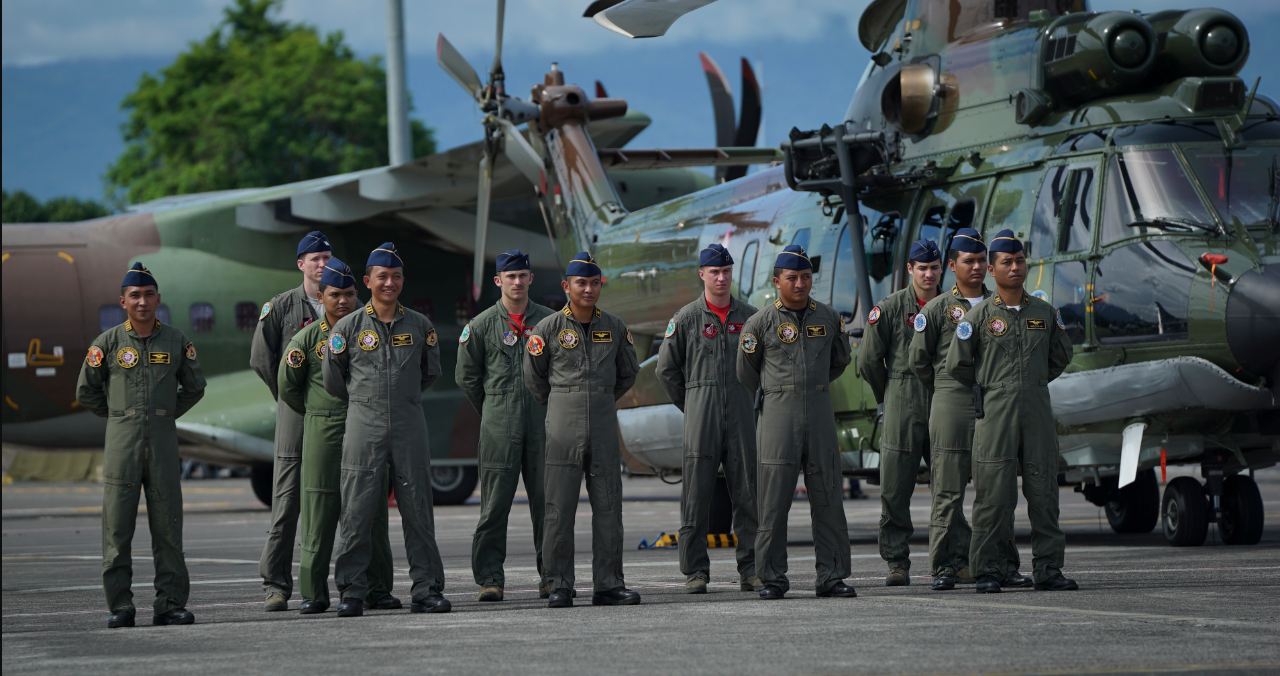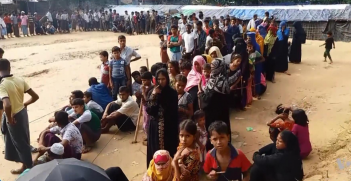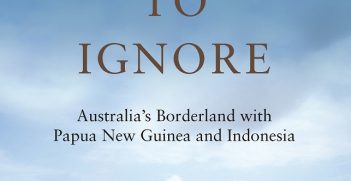Indonesia, ASEAN and the Return of the Indo-Pacific Strategy

In light of ASEAN’s explanation of its “outlook on the Indo-Pacific,” it is important to remember that Indonesia and ASEAN have taken a different approach to the concept than other regional actors, especially the United States.
Addressing the Indian Parliament in August 2007, Japanese Prime Minister Shinzo Abe made an impassioned call for a “dynamic coupling” of the Indian and Pacific Oceans as “seas of freedom and of prosperity.” Both India and Japan, Abe added, had the ability and responsibility to ensure that a “broader Asia” became “seas of clearest transparence.” The month after Abe’s speech, the four powers conducted naval exercises in the Bay of Bengal: underscoring the nascent capabilities inherent among the four democracies. The group met once as the Quadrilateral Security Dialogue in 2007. Later that year, the “Quad” and its associated Indo-Pacific concept dissipated after Abe’s resignation and Australia’s withdrawal the quadrilateral arrangement.
Twelve years after its demise, the Indo-Pacific concept is back with a vengeance in regional security debates. As per 2007, the same four countries are offering the Indo-Pacific concept: Australia, India, Japan and the United States. They have stressed the undergirding principles: the rule of law, no recourse to the use or threat or force, freedom of navigation and overflight. In June 2019, the United States released its Indo-Pacific Strategy Report (IPSR) in tandem with the delivery of Acting Secretary of Defense Patrick Shanahan’s plenary address at the Shangri-La Dialogue. While the IPSR is the most detailed US strategy document of its kind for some time, there was little inherently new in the document. While the concept can be seen as a subtle counter to China, it suffers from the lack of a shared, coherent strategy among the Indo-Pacific Four countries. In effect, there are different Indo-Pacific strategies being offered by the Indo-Pacific Four, depending on their conceptualisation of the Indo-Pacific, management of the China threat, defence cooperation and maritime security, as well as connectivity. At any rate, Indonesia and ASEAN have started to build their own Indo-Pacific approach, which stresses ASEAN centrality and inclusivity. ASEAN’s assessment is that the Indo-Pacific Four’s Indo-Pacific concept focuses too much on excluding China and less on integrating Beijing into the regional architecture. This does not augur well for ASEAN’s wholesale acceptance of FOIP concepts into the grouping’s approach to the Indo-Pacific.
Potential of the FOIP Concept
There have been several key drivers behind the re-emergence of the Indo-Pacific concept. At the most fundamental level, the four countries behind the concept share commonalities in their democratic underpinnings. Speaking at the 2018 Shangri-La Dialogue, Mattis said that the “common character” behind the so-called “Quad” is that they are democracies. In 2012, Shinzo Abe touted the “democratic security diamond” when he spoke about the power of four democracies guarding the maritime commons from the Indian Ocean to the western Pacific.
The FOIP concept is emerging at a time in which the region is faced with multiple sources of instability that could lead to overt conflict. The slow-boiling of four flashpoints in the Indo-Pacific — the Korean peninsula, the East China Sea, the South China Sea and the Taiwan Strait — has made major war in the region more likely. The Indo Pacific Four’s FOIP concept adopts a nuanced and sophisticated approach, by promoting principles, and not the specific issues that challenge such principles. The FOIP concept takes a leaf from Japanese premier Shinzo Abe’s approach – which was a subtle but indirect swipe at Chinese activities in the South China Sea. Speaking at the Shangri-La Dialogue in 2014 — at a time when China’s reclamation in the South China Sea was beginning to cause regional concerns — Abe called for three “rule of law” principles to prevail: clarification of claims based on international law, no resort to the use of threat of force in enforcing claims and the peaceful settlement of territorial disputes.
Indonesia’s Indo-Pacific Concept: Asserting ASEAN Centrality
Compared to the US-led FOIP strategy, which focuses on economics and security issues through a geopolitical lens, Indonesia’s initiative to craft a unified ASEAN approach to the Indo-Pacific stresses more on economics, cooperation, ASEAN centrality, as well as inclusivity. Indonesia’s Indo-Pacific approach dates back to 2013, when then foreign minister Marty Natalegawa proposed an Indo-Pacific Treaty of Friendship and Cooperation. The current Indonesian approach and Natalegawa’s Indo-Pacific treaty share key elements: an inclusive Indo-Pacific, the importance of trust and confidence building and an ASEAN-led Indo-Pacific. Indonesia’s Indo-Pacific Cooperation Concept document is not in the public domain, but the general contours of its approach are discernible from public statements. In May 2018, Indonesia pitched the concept to other ASEAN member states. The concept has three key elements: building an environment that supports international law and peaceful dispute settlement, addressing transnational challenges such as terrorism and piracy, and creating new “economic growth centres” in the Indian and South Pacific ocean in an “open and fair” economic system. Speaking at the East Asia Summit in November 2018, President Jokowi Widodo stressed five key elements: openness, inclusiveness, transparency, respect for international law and ASEAN centrality.
President Jokowi stressed that Indonesia had received positive responses and support from ASEAN countries for its Indo-Pacific concept. He expressed hope that the draft concept would be agreed upon, as “informal consultations” on the document continued. He expressed hope that through Indonesia’s Indo-Pacific concept the centrality of ASEAN would be maintained. Indonesia’s attempt to maintain ASEAN centrality on the Indo-Pacific concept is understandable. A carte blanche acceptance of the US-led FOIP strategy offered would lead to a loss in ASEAN centrality. Indonesia’s Indo-Pacific concept would provide ASEAN the intellectual leadership to discuss the future of the region. Current concerns within ASEAN about the loss of centrality in regional affairs has an older provenance. In 2009, Australian prime minister Kevin Rudd pitched the idea of an Asia-Pacific Community that involved six vital countries — United States, China, Japan, India, Indonesia and Russia — but no ASEAN involvement. The proposal did not gain traction due to ASEAN’s concerns about the loss of centrality.
Extra-ASEAN regional powers such as India, Japan and the United States have expressed support for ASEAN centrality. In practice, major powers would only profess ASEAN centrality only when it suits their interests; such powers consider ASEAN “central” not because of its strategic heft, but its relative weakness. This makes ASEAN an “occasionally useful instrument” to advance the interests of major powers while ensuring it cannot block their “most vital designs.” For example, President Trump missed the EAS meeting in 2018: a move that belied Washington’s support for ASEAN centrality. Intriguingly, Indonesia has itself shown marginal interest in ASEAN by not actively pursuing the South China Sea dialogue process and reducing its budget for ASEAN affairs. Nonetheless, Indonesia and ASEAN’s assertion of ASEAN centrality in the evolving Indo-Pacific concept shows that Indonesia is seeking to put ASEAN on an autonomous path amid the geopolitics between the US-led Quad and an assertive China.
It is an open secret that FOIP strategy is a bid to manage the perceived challenge of China, and more specifically, China’s militarisation in the South China Sea. With regard to this, however, Indonesia and ASEAN have refused to put any Indo-Pacific concept in a geopolitical frame. Speaking in January 2018, Retno Mursadi said that cooperation in Indo-Pacific should not be based on “suspicion, or worse, perception of threat.” Jokowi’s key emphasis is that ASEAN’s Indo-Pacific concept should “turn potential threats into cooperation, and turn potential conflict into peace.” He has invited China to cooperate even closer with ASEAN under the Indo-Pacific concept, as it pertains to maritime security and search and rescue operations at sea. Privately, ASEAN diplomats have alerted ASEAN’s dialogue partners that the ASEAN framework will be distinctive from the US-inspired FOIP, despite sharing some key principles. The ASEAN approach would be inclusive and not aimed at any particular power. ASEAN’s preferred platform for its Indo-Pacific concept would be the East Asia Summit, which includes China and the United States. The ASEAN approach will focus on interests, given that it would be easier to cooperate on the basis of mutually beneficial cooperation, as opposed to values, which can vary due to different political systems. While Indo-Pacific Four countries such as Japan are primarily concerned about security issues, Indonesia is more interested in economic benefits. During a visit to Jakarta in January 2017, Shinzo Abe wanted Indonesia to cooperate on maritime security, particularly in the Natunas where Chinese incursions in Indonesia’s EEZ had taken place. The proposal was likely rejected, as Jakarta was reluctant to have a foreign navy patrolling Indonesian waters. In addition, such activities would have drawn a reaction from Beijing.
Conclusion
Among the Indo-Pacific Four countries, there are fundamental divergences in their conceptualisation of the Indo-Pacific and related issues such as the challenge of China, maritime security and connectivity, with the US position on China being the most prominent. At any rate, Indonesia’s initiative to steer ASEAN’s approach to the Indo-Pacific means that the grouping will not accept the FOIP strategy carte blanche. While ASEAN will adapt elements from FOIP strategy that are appropriate,[…] Indonesia and ASEAN’s latest assertion of ASEAN centrality in their approach to the Indo-Pacific means that the possibility of the FOIP strategy being adopted by the grouping in its entirety will be remote.
William Choong is a senior fellow for Asia-Pacific Security at the International Institute for Strategic Studies.
This article is an extract from Choong’s article in the Australian Journal of International Affairs titled “The Return of the Indo-Pacific Strategy: an assessment.” It is republished with permission.





